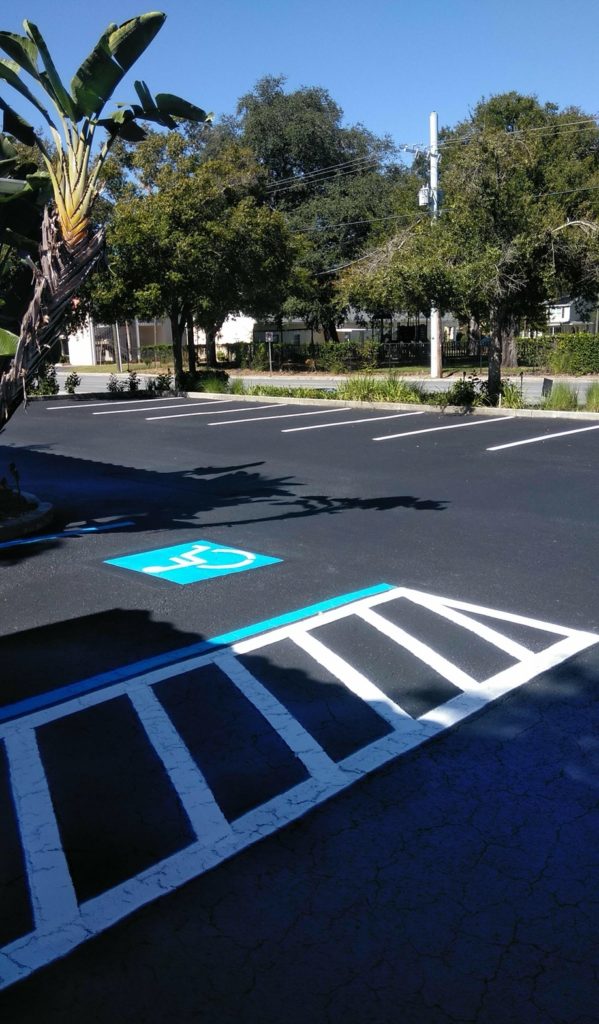Warm Mix Asphalt: A Lasting Remedy for Sidewalk
Hot Mix Asphalt (HMA) has actually arised as a leading sustainable choice for pavement solutions, using a myriad of ecological advantages and cutting-edge modern technologies. As the demand for environmentally friendly building practices expands, discovering the subtleties of HMA's sustainability can provide useful insights right into the future of sidewalk solutions.
Ecological Advantages of Warm Mix Asphalt

Furthermore, Warm Mix Asphalt helps to mitigate city heat island impacts. Its dark shade takes in sunshine, reducing the quantity of warmth mirrored back into the atmosphere contrasted to lighter-colored sidewalks. This can lower ambient temperature levels in urban areas, lowering the need for air conditioning and ultimately minimizing energy intake.
On top of that, Hot Mix Asphalt contributes to improved stormwater management. Its permeable nature permits water to penetrate the pavement and reenergize groundwater supplies, lowering drainage and the threat of flooding. These ecological advantages make Warm Mix Asphalt a sustainable option for paving freeways and roadways.
Energy Efficiency in HMA Manufacturing
Is power effectiveness a crucial variable in the production of Warm Mix Asphalt (HMA)? Absolutely. Power plays a substantial duty in the manufacturing of HMA, impacting both expense and ecological sustainability. One vital element of power efficiency in HMA production is the usage of cozy mix asphalt (WMA) technologies (regrading). WMA permits for the mixing and placement of asphalt at reduced temperature levels compared to conventional hot mix asphalt, leading to lowered energy intake during production. This process not only lowers fuel use however likewise decreases greenhouse gas exhausts, making it a more ecologically pleasant choice.
Furthermore, improvements in plant innovations have led to more energy-efficient HMA production procedures. By optimizing energy usage in HMA production, the industry can reduce its carbon footprint while maintaining high-quality pavement products.
Recyclability of Hot Mix Asphalt
The recyclability of Hot Mix Asphalt (HMA) is a crucial facet of its sustainability and lasting environmental impact. HMA is one of the most recycled products in the United States, with over 100 million tons of redeemed asphalt sidewalk (RAP) being recycled each year in new pavement building. Reusing HMA offers numerous ecological advantages, such as reducing the need for virgin click to read more materials, decreasing energy usage during manufacturing, and lowering the amount of waste sent out to landfills.
The procedure of reusing HMA entails grating the existing pavement, crushing it into smaller sized pieces, and blending it with brand-new accumulation and asphalt binder to create a recycled mix. This recycled mix can often execute as well as and even better than standard HMA, while calling for less resources and producing reduced greenhouse gas discharges. By incorporating RAP into brand-new sidewalk projects, road agencies can conserve natural deposits, lower expenses, and minimize the environmental footprint of road construction and maintenance activities. Generally, the recyclability of HMA plays a substantial role in promoting sustainable practices within the pavement market.

Long-Term Performance of HMA
Asphalt pavements demonstrate sturdiness and strength over an extended period, reflecting the long-term efficiency of Hot Mix Asphalt (HMA) The durability of HMA can be credited to its capability to withstand rush hour tons, rough climate condition, and the impacts of aging. Research studies have actually revealed that well-designed and properly built HMA pavements can last for two decades or more with normal upkeep. The trick to taking full advantage of the long-term efficiency of HMA hinges on utilizing top quality materials, adhering to finest techniques in building and construction, and implementing reliable maintenance strategies. Correct drain, regular inspections, and timely fixings are important for protecting the structural integrity of HMA pavements over time. In addition, advancements in HMA modern technology, such as using polymer-modified binders and cozy mix asphalt, have better improved the durability and long life of HMA sidewalks. By prioritizing top quality construction and maintenance practices, HMA remains to show itself as a affordable and lasting option for durable pavement facilities.

HMA: Toughness and Sustainability
Demonstrating both durability and sustainability, Warm Mix Asphalt (HMA) has ended up being a cornerstone in the building and construction of lasting pavement frameworks - regrading. HMA's sturdiness originates from its ability to withstand hefty tons, severe weather, and high traffic volumes, making it a reliable selection for roads, freeways, and airport runways. The composition of HMA, which usually includes aggregates, binder, and filler, plays a crucial function in boosting its longevity and resistance to tear and wear
In addition, HMA's sustainability depends on its recyclability and energy-efficient manufacturing process. The capacity to reuse redeemed asphalt pavement (RAP) in brand-new HMA combinations lowers the demand for virgin products and reduces the ecological effect of sidewalk building and upkeep. In addition, the energy efficiency of creating HMA exists in its lower mixing temperature levels view it compared to other pavement materials, resulting in reduced power usage and greenhouse gas emissions.
Conclusion
In conclusion, warm mix asphalt (HMA) provides a sustainable service for sidewalk with its ecologically pleasant qualities. HMA's recyclability, power efficiency in manufacturing, and lasting longevity make it an environmentally friendly selection for roadway building and construction.
HMA is one of the most recycled products in the United States, with over 100 million lots of recovered asphalt sidewalk (RAP) being recycled why not check here yearly in brand-new sidewalk building.The process of reusing HMA includes grating the existing sidewalk, squashing it into smaller sized pieces, and mixing it with brand-new accumulation and asphalt binder to create a recycled mix.Asphalt pavements show resilience and strength over an extended period, mirroring the long-lasting performance of Warm Mix Asphalt (HMA) Furthermore, developments in HMA innovation, such as the usage of polymer-modified binders and cozy mix asphalt, have additionally improved the longevity and longevity of HMA sidewalks. The capability to reuse recovered asphalt pavement (RAP) in brand-new HMA mixes decreases the need for virgin products and decreases the ecological impact of sidewalk construction and upkeep.